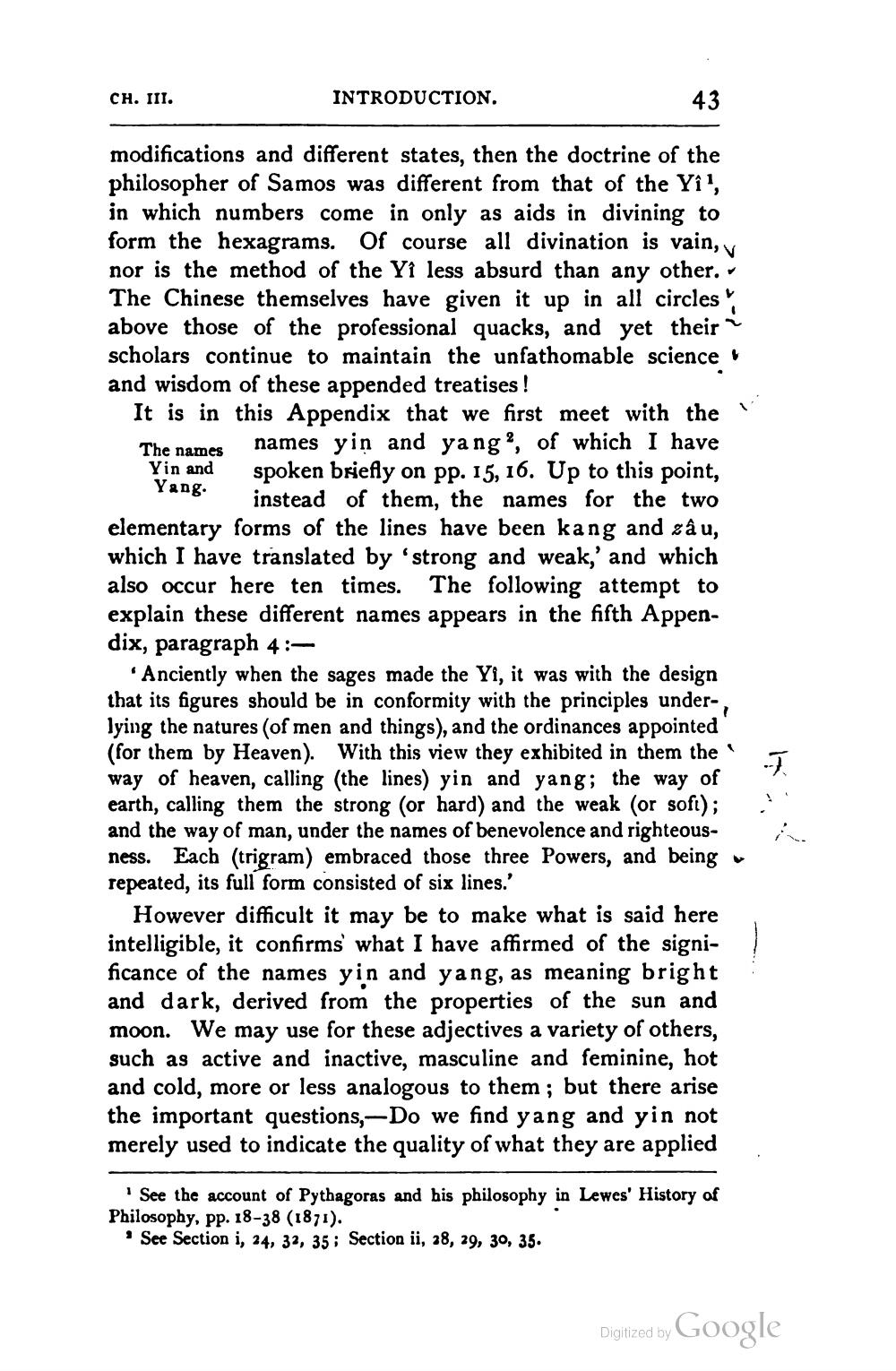________________
CH. III.
INTRODUCTION.
modifications and different states, then the doctrine of the philosopher of Samos was different from that of the Yil, in which numbers come in only as aids in divining to form the hexagrams. Of course all divination is vain, nor is the method of the Yỉ less absurd than any other. The Chinese themselves have given it up in all circles above those of the professional quacks, and yet their scholars continue to maintain the unfathomable science and wisdom of these appended treatises ! It is in this Appendix that we first meet with the The names names yin and yang?, of which I have Yin and spoken briefly on pp. 15, 16. Up to this point, Yang.
instead of them, the names for the two elementary forms of the lines have been kang and câu, which I have translated by strong and weak,' and which also occur here ten times. The following attempt to explain these different names appears in the fifth Appendix, paragraph 4:
Anciently when the sages made the Yi, it was with the design that its figures should be in conformity with the principles under-, lying the natures (of men and things), and the ordinances appointed (for them by Heaven). With this view they exhibited in them the way of heaven, calling (the lines) yin and yang; the way of earth, calling them the strong (or hard) and the weak (or soft); and the way of man, under the names of benevolence and righteous- ness. Each (trigram) embraced those three Powers, and being repeated, its full form consisted of six lines.'
However difficult it may be to make what is said here intelligible, it confirms what I have affirmed of the significance of the names yin and yang, as meaning bright and dark, derived from the properties of the sun and moon. We may use for these adjectives a variety of others, such as active and inactive, masculine and feminine, hot and cold, more or less analogous to them; but there arise the important questions,-Do we find yang and yin not merely used to indicate the quality of what they are applied
i
See the account of Pythagoras and his philosophy in Lewes' History of Philosophy, pp. 18-38 (1871).
* See Section i, 24, 32, 35; Section ii, 28, 29, 30, 35.
Digitized by Google




